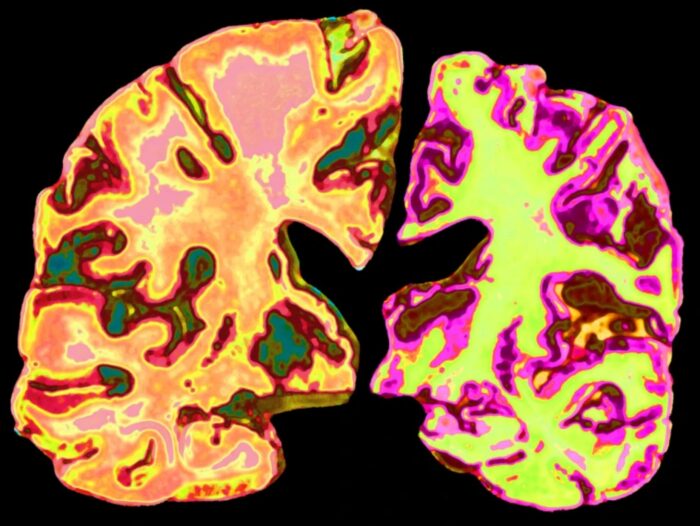Aug 12 2025
Lithium and Alzheimer’s Disease
 This is an interesting story, and I am trying to moderate my optimism. Alzheimer’s disease (AD), the major cause of dementia in humans, is a very complex disease. We have been studying it for decades, revealing numerous clues as to what kicks it off, what causes it to progress, and how to potentially treat it. This has lead to a lot of knowledge about the disease, but only recently resulted an effective disease-modifying treatments – the anti-amyloid treatments.
This is an interesting story, and I am trying to moderate my optimism. Alzheimer’s disease (AD), the major cause of dementia in humans, is a very complex disease. We have been studying it for decades, revealing numerous clues as to what kicks it off, what causes it to progress, and how to potentially treat it. This has lead to a lot of knowledge about the disease, but only recently resulted an effective disease-modifying treatments – the anti-amyloid treatments.
Another line of investigation has focused on lithium – that’s right, the element, and a major component of EV batteries. Lithium has long been recognized as a treatment for various mood and mental disorders, and was approved in 1970 in the US for the treatment of bipolar disorder. That is what I learned about it in medical school – it was the standard of care for BD but no one really new how it worked. It was the only “drug” that was just an element. It had a certain mystery to it, but it clearly was effective.
Now lithium is emerging as a potential treatment for AD. A recent study of lithium in mice has brought the treatment into the mainstream press, so it’s worth a review. Because of lithium’s benefit for BD it was studied for its effects on the brain. But also, it was observed that patients getting lithium treatment for BD had a lower risk of AD. Other observational data, such as levels of lithium in drinking water, also appeared to have this protective association. This kind of observational data is never definitive, but it was interesting enough to warrant further research.
Also, research started finding many potential mechanisms by which lithium could affect brain function. It is a cofactor for some enzymes, meaning it makes them work more efficiently. It also can affect gene expression and therefore certain protein levels. It can also silence the activity of some proteins. It’s always hard to extrapolate from these kinds of effects to a net clinical outcome, so at best they were further clues that need to be followed up.
Over this same time lithium’s potential role in AD was being further explored. It turns out that lithium levels tend to be lower in patients with minimal cognitive impairment, which can be an early sign of AD. Further still the amyloid plaques that are a hallmark of AD bind up lithium to reduce level in the brain. Reduces lithium also contributes to more plaques, creating a vicious loop. Earlier studies with lithium and animal models of dementia showed mixed results. But it’s possible this is because forms of lithium that get bound up in amyloid are not effective, while other forms of lithium that are resistant to so-called amyloid sequestration are effective. This includes lithium orotate.
This brings us to the new study. Researchers looked at the effect of lithium orotate in a mouse model of dementia and found that is not only slowed but reverse memory loss and brain changes in the mice.
Taken together, this is a nice story, with lots of circumstantial evidence but mostly pointing towards a consistent conclusion. Low brain lithium levels may contribute to the onset and progression of AD, exacerbated by amyloid plaques further sequestering lithium. Supplementation with lithium orotate, which is not sequestered by amyloid, may therefore restore brain function and slow or even reverse the anatomical changes that result from the disease.
I certainly hope this all turns out to be true, but we have been here many times before – with a nice story about how AD works pointing toward a potential treatment, which then fails in human clinical trials. So here we are again. Of course, past history does not means things will not work out this time, and this is a particularly good story. The next step, obviously, are clinical trials in humans. These are in the works. It helps that lithium is already an established treatment, so it already has a known safety profile.
The hope is that we will complete several clinical trials over the next 5-6 years and that lithium orotate will prove effective in treating AD. It is also nice that lithium as a treatment is dirt cheap. It cannot be patented and it is cheap to make. There is some concern that this means, however, pharmaceutical companies will therefore not want to invest millions of dollars in clinical research.
But that is exactly why we have the NIH and federal funding of medical research, for treatments that are not commercially profitable. This is also why it is so painful that Trump is attacking this funding. He has cancelled more than 1800 NIH grants, a move that is probably illegal, but meanwhile has dramatically decreased funding of research and threatens our medical research infrastructure. His budget bill also cut NIH funding by 40% ($18 billion). The senate, thankfully, rejected this and has since proposed a funding bill that will restore NIH’s funding and increase it by 1%. Now we have to wait to see what the House does and what the final compromise will be. The future of research like this will depend upon what they do.






